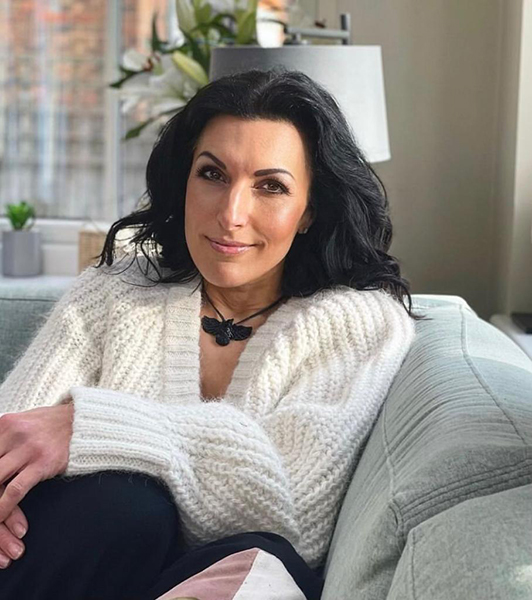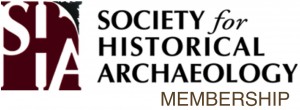Here’s the latest in our series of entertaining interviews with a diverse array of your fellow SHA members. Meet a member for the first time or learn something about a colleague that you never knew before. This blog series also offers current members an opportunity to share their thoughts on why SHA membership is important (Camaraderie? Professional service? Exchange of ideas in conference rooms and beyond? You tell us!). If you would like to be an interviewee, please email the Membership Committee Social Media Liaisons Eleanor Breen (eabreen@mountvernon.org) or Kim Pyszka (kmpyszka@aum.edu).
An Interview with Ellen Bowman (ellenbowman01@archaeologist.com/bowmanellen01@gmail.com), a board member of the Department of Anthropology at the University of Michigan where she co-manages archaeological research.
Fieldwork or labwork?
The physicality and mental rigor of fieldwork intrigue me. Furthermore, I appreciate being outdoors, and fieldwork has taken me to some magnificent places. Being able to study the material culture in the lab gives me a better understanding of human behavior in ancient times. I like them both equally, but I prefer fieldwork slightly more.
What would be your dream site to work at?
My two personal favorites would have to be the ancient city of Pompeii in Italy and the Great Pyramids of Giza in Egypt. Pompeii is an incredible archaeological site because it is so well-preserved. The city was buried in ash when Mount Vesuvius erupted in 79 AD, and this helped to preserve many of the buildings and artifacts. Pompeii is a great site to work at for archaeologists because it can teach us a lot about daily life in the Roman Empire. The Great Pyramids of Giza, another one of my favorite archaeological sites. were built over 4,500 years ago and they are still standing today. They are an incredible feat of engineering, and it is fascinating to think about how the ancient Egyptians built them. The Great Pyramids are a great site to work at because they can teach us a lot about the history and culture of ancient Egypt.
What are you currently reading?
I'm currently reading a book called "The Lost City of the Monkey God" by Douglas Preston. It's about a group of explorers who journey into the rainforest of Honduras in search of a lost city that was rumored to exist. The book is really fascinating and I've learned a lot about the history and culture of the region.
One of the things that I've found most interesting is the way that the city was thought to be cursed. According to legend, anyone who dared to enter the city would be cursed with a horrible disease. The explorers who found the city did indeed contract a disease, but they were able to find a cure and eventually made it back to civilization. I've also been learning about the different types of artifacts that were found in the city. There are pottery shards, stone tools, and even human remains. It's amazing to think about how these objects can tell us so much about the people who lived in this lost city.
What did you want to be when you grew up?
I've always been interested in history and the stories that come with it. When I was younger (born and raised in Dearing, Georgia), I would go on hikes with my family and look for arrowheads. I loved learning about different cultures and how they lived. In high school, I took an archaeology class and I was hooked. I loved learning about the different methods used in archaeology and how to properly excavate a site. I knew then that I wanted to be an archaeologist.
Why are you a member of SHA?
The publication of archaeological research in the discipline is essential and valuable. Unfortunately, the SHA has a limited number of publications and can only publish a small percentage of the research that is submitted. The question that I ask myself every year is whether or not the SHA has published enough archaeological research for my needs. If the answer is no, then I feel a responsibility to help the discipline by contributing to one of its other quality publications by submitting articles or by serving on a committee.
At what point in your career did you first join SHA?
I joined SHA sometime in the early or mid-1990s!
How many years have you been a member (approximately)?
22-24 years.
Which article from Historical Archaeology has been the most influential to you?
If ‘most influential’ equates to ‘most cited’, then it’s undoubtedly George Miller’s 1991 revised CC Index article (pdf), and Patricia Samford’s 1997 transfer print dating article (pdf). Instead, I’d have to pick lesser-cited but nevertheless very important pieces of writing, such as Mary Leaky’s introduction to the notion of ‘ordinary archaeology’. The original article was published in the late ‘70s, but it’s an idea that has only come into its own more recently. In the last 20 years, we’ve seen an explosion in the amount of writing about the importance of ‘ordinary archaeology’ and the people who do it. Much of this writing is inspired by Mary's original piece.(ed. note: both of these articles are available for free in our SHA Publications Explorer!!).
Which benefit of belonging to SHA do you find the most beneficial?
The journal is a very important source for knowledge transfer in our field, but it’s mostly read by other academics. The conference, on the other hand, is a great way for us to learn from one another and share our practical know-how with each other. It’s not just about talking about research in theory. It’s about working with each other to solve our problems and advance the state of the art in our field.


